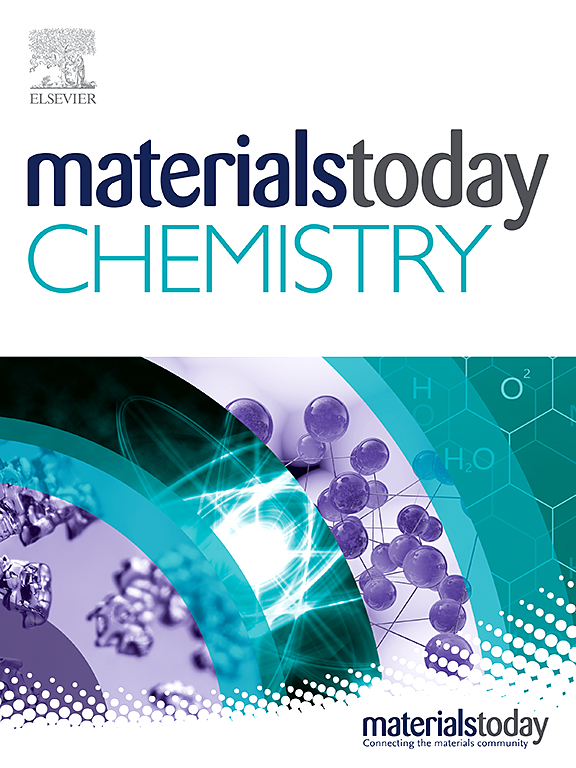Effective electron trap regulation in near-infrared persistent phosphor of ZnAl2O4:Cr3+ for round-the-clock plant lighting
IF 6.7
2区 化学
Q1 CHEMISTRY, MULTIDISCIPLINARY
引用次数: 0
Abstract
Cr-doped phosphors are widely used in the near-infrared (NIR) phosphor-converted light-emitting diodes (pc-LEDs) for plant growth lighting in the modern agriculture due to their excellent luminous efficiency and spectral tunability. However, the inevitable energy consumption and heat radiation issues force us to shift our focus to develop a novel plant lighting pattern of energy storage activated by sunlight and NIR afterglow illumination at night. Herein, a series of ZnMgAlGaO:Cr (ZMAGO:Cr) NIR persistent luminescence (PersL) phosphors, achieving a far-red emission at 675–775 nm upon 387 nm or 530 nm excitation is designed. The optimal ZMAGO:Cr ( = 0.6) phosphor exhibits a 194-fold initial NIR afterglow intensity and PersL decay time last for more than 6 h. The enhancement of afterglow originates from the introduction of effective electron traps, which can be precisely controlled by changing the Mg/Ga doping concentration. Meanwhile, by utilizing the photon transmission from SrAlO:Eu,Dy green phosphor to ZMAGO:Cr ( = 0.6) NIR phosphor, the prepared NIR coatings obtain 2.5 times enhanced PersL intensity and afterglow far more than 12 h by sunlight excitation, meeting the requirements of non-electrical excitation and round-the-clock plant lighting. The successful development of NIR coatings based on the ZMAGO:Cr phosphor is expected to accelerate the exploitation of next generation of intelligent and energy friendly light sources for indoor agriculture.用于全天候植物照明的 ZnAl2O4:Cr3+ 近红外持久荧光粉中的有效电子阱调节功能
掺杂铬的荧光粉因其出色的发光效率和光谱可调性,被广泛应用于近红外(NIR)荧光粉转换发光二极管(pc-LED),用于现代农业中的植物生长照明。然而,不可避免的能耗和热辐射问题迫使我们将重点转移到开发一种新型的植物照明模式上,即利用太阳光激活能量储存,并在夜间利用近红外余辉照明。在此,我们设计了一系列 ZnMgAlGaO:Cr(ZMAGO:Cr)近红外持续发光(PersL)荧光粉,在 387 nm 或 530 nm 激发下可实现 675-775 nm 的远红外发射。最佳 ZMAGO:Cr ( = 0.6) 荧光粉的初始近红外余辉强度为 194 倍,PersL 衰减时间超过 6 小时。同时,利用从 SrAlO:Eu,Dy 绿色荧光粉到 ZMAGO:Cr ( = 0.6) 近红外荧光粉的光子传输,制备的近红外涂层在太阳光激发下获得了 2.5 倍的增强 PersL 强度,余辉时间超过 12 h,满足了非电激发和全天候植物照明的要求。基于 ZMAGO:Cr 荧光粉的近红外涂层的成功开发有望加速下一代室内农业智能节能光源的开发。
本文章由计算机程序翻译,如有差异,请以英文原文为准。
求助全文
约1分钟内获得全文
求助全文
来源期刊

Materials Today Chemistry
Multiple-
CiteScore
8.90
自引率
6.80%
发文量
596
审稿时长
33 days
期刊介绍:
Materials Today Chemistry is a multi-disciplinary journal dedicated to all facets of materials chemistry.
This field represents one of the fastest-growing areas of science, involving the application of chemistry-based techniques to the study of materials. It encompasses materials synthesis and behavior, as well as the intricate relationships between material structure and properties at the atomic and molecular scale. Materials Today Chemistry serves as a high-impact platform for discussing research that propels the field forward through groundbreaking discoveries and innovative techniques.
 求助内容:
求助内容: 应助结果提醒方式:
应助结果提醒方式:


